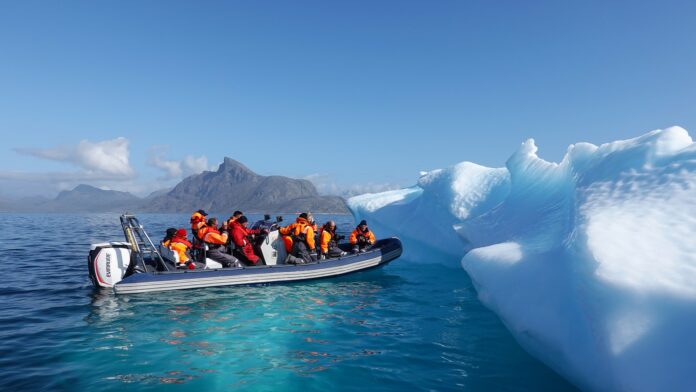Source: MakeLemonade.nz
Tamaki Makaurau – Global warming has caused extreme ice melting events in the north and south poles.
Greenland’s ice melt has become more frequent and more intense over the past 40 years according to new research, raising sea levels and flood risk worldwide.
In the last decade alone, 3.5 trillion tonnes of ice have melted from the surface of the island and flowed downhill into the ocean.
That’s enough melted ice to cover all of New Zealand. The new study, led by the University of Leeds, is the first to use satellite data to detect this phenomena, known as ice sheet runoff, from space.
The findings reveal that Greenland’s meltwater runoff has risen by 21 percent over the past four decades and has become 60 percent more erratic from one summer to the next.
As in other parts of the world, Greenland is also vulnerable to an increase in extreme weather events.
As the planet heats up, it’s reasonable to expect that the instances of extreme melting in Greenland will happen more often.
The research shows that over the past decade (2011 to 2020), increased meltwater runoff from Greenland raised the global sea level by one centimetre.
One third of this total was produced in just two hot summers (2012 and 2019), when extreme weather led to record-breaking levels of ice melting not seen in the past 40 years.
Raised sea levels caused by ice melt heightens the risk of flooding for coastal communities worldwide and disrupts marine ecosystems in the Arctic Ocean where indigenous communities rely on for food.
Down south, Antarctica’s ice melt could have significant consequences for global sea levels as well. Antarctica could cross tipping points, leading to a rapid and irreversible retreat which would have significant consequences for global sea levels, impacting New Zealand’s coastline.
Up north, during the past decade, runoff from Greenland has averaged 357 billion tonnes per year, reaching a maximum of 527 billion tonnes of ice melt in 2012. This was more than twice the minimum runoff of 247 billion tonnes that occurred in 2017.
The changes are related to extreme weather events, such as heatwaves, which have become more frequent and are now a major cause of ice loss from Greenland because of the runoff they produce.
The study suggests the Greenland ice sheet will contribute between about three cm and 23 cm to global sea level rise by 2100. The study also showed satellites are able to provide instant estimates of summer ice melting.



